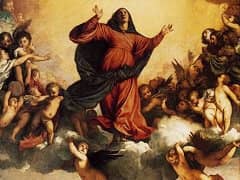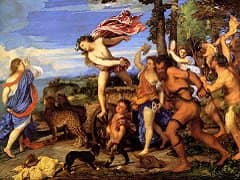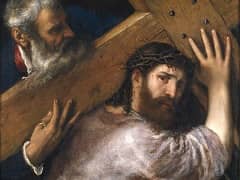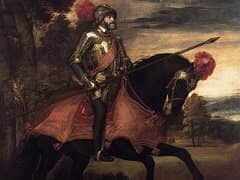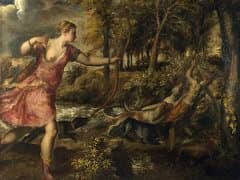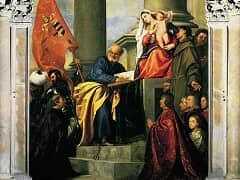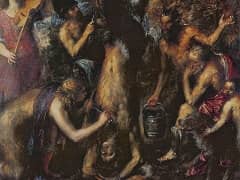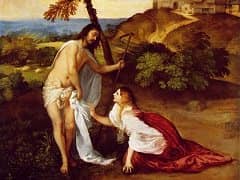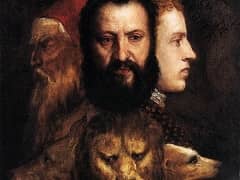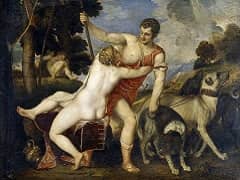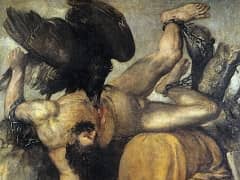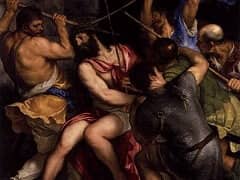The Madonna of the Rabbit, 1525–1530 by Titian
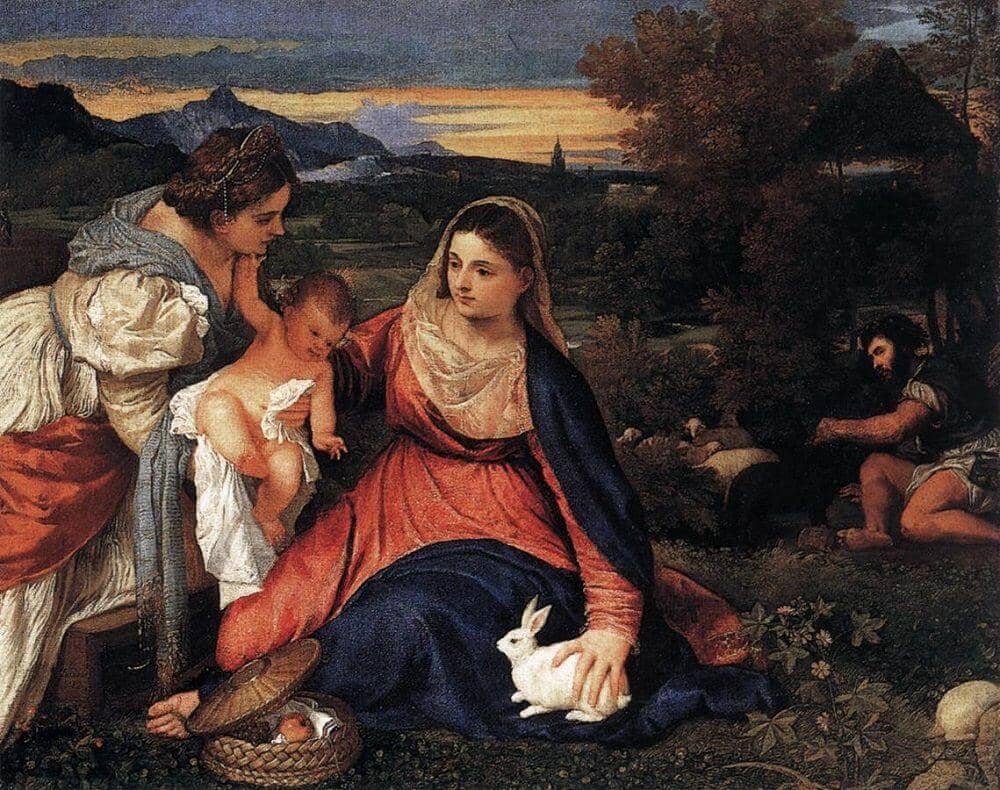
In The Madonna of the Rabbit, Titian’s artistry lies in the subtle evocation of a religious theme.
The Virgin in her red dress and blue cloak and the Infant Jesus are fairly easy to recognize, but it would perhaps be useful to identify the other figures and the objects. The elegant woman
dressed like a 16th-century married Venetian woman is Catherine of Alexandria, a 4th-century martyred saint who in a vision was married to Christ. She is kneeling on a wheel, the instrument
of her martyrdom.
In Christian liturgy, that which is sacred cannot be held with bare hands. The white cloth in which Catherine holds the child emphasizes the idea of holiness.
In the basket of food can be seen the apple, symbol of Eve’s sin, the bunch of grapes representing the wine of the Eucharist and the blood of Christ. The strawberry underneath Saint Catherine
is traditionally represented as one of the fruits of paradise.
In antiquity it was thought that the rabbit could reproduce without sexual intercourse. So here the rabbit is an allusion to the Virgin’s virginity and the conception of Christ without sin,
its whiteness an assertion of purity.
The shepherd playing the panpipes conjures up the world of antiquity. Placed in the middle ground, he evokes the concept dear to Renaissance artists of Christianity replacing the pagan golden
age and redeeming humanity.

